Ecology of Invertebrate Diseases
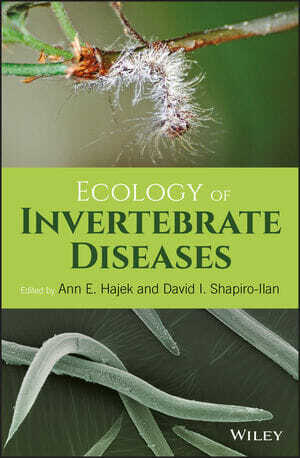
By Ann E. Hajek , David I. Shapiro-Ilan
Ecology of Invertebrate Diseases PDF. A rapidly growing interdisciplinary field, disease ecology merges key ideas from ecology, medicine, genetics, immunology, and epidemiology to study how hosts and pathogens interact in populations, communities, and entire ecosystems. Bringing together contributions from leading international experts on the ecology of diseases among invertebrate species, this book provides a comprehensive assessment of the current state of the field. Beginning with an introductory overview of general principles and methodologies, the book continues with in-depth discussions of a range of critical issues concerning invertebrate disease epidemiology, molecular biology, vectors, and pathogens. Topics covered in detail include:
- Methods for studying the ecology of invertebrate diseases and pathogens
- Invertebrate pathogen ecology and the ecology of pathogen groups
- Applied ecology of invertebrate pathogens
- Leveraging the ecology of invertebrate pathogens in microbial control
- Prevention and management of infectious diseases of aquatic invertebrates
Ecology of Invertebrate Diseases is a necessary and long overdue addition to the world literature on this vitally important subject. This volume belongs on the reference shelves of all those involved in the environmental sciences, genetics, microbiology, marine biology, immunology, epidemiology, fisheries and wildlife science, and related disciplines.
List of Contributors xvii
Preface xxi
Section I Introduction 1
1 General Concepts in the Ecology of Invertebrate Diseases 3
Ann E. Hajek and David I. Shapiro-Ilan
1.1 Introduction 3
1.1.1 What Is Disease? 4
1.1.2 Terminology and Measurements 5
1.1.2.1 Prevalence/Incidence 5
1.1.2.2 Pathogenicity/Virulence 5
1.1.2.3 Infection/Infectivity 6
1.1.2.4 Immunity 6
1.1.2.5 Transmission 7
1.1.2.6 Epizootic and Enzootic Diseases 7
1.1.2.7 Cycles of Infection 8
1.1.2.8 R0 and the Host Density Threshold 10
1.1.3 Factors Influencing the Ecology of Invertebrate Diseases 11
1.1.3.1 Host Range 12
1.2 Types of Studies 13
1.3 Why Study the Ecology of Invertebrate Diseases? 13
1.4 What this Book Covers 14
Acknowledgments 16
References 16
2 Methods for Studying the Ecology of Invertebrate Diseases and Pathogens 19
Raquel Campos-Herrera and Lawrence A. Lacey
2.1 Introduction 19
2.2 Traditional Methods for Studying Diseases 19
2.2.1 Sampling Goals 19
2.2.2 Sampling Regimes 20
2.2.3 Methodologies 20
2.2.3.1 Searching for Infected Insects Using General Entomological Sampling Methods 23
2.2.3.2 Selective Media 23
2.2.3.3 Extraction Methods 24
2.2.3.4 Airborne Spore Sampling 24
2.2.3.5 Insect Baiting 24
2.2.3.6 Dispersal of Entomopathogens: Mark–Release–Recapture Method 25
2.3 Molecular Tools to Assist in the Detection and Quantification of Pathogens and their Impact on the Host 25
2.3.1 Employment of Proteins: The Beginning of the Molecular Era in Invertebrate Pathology 26
2.3.2 Techniques Based on the Nucleic Acids: the “Pre]Omics” Era 27
2.3.3 Advanced Techniques: qPCR, NGS, and the Arrival of the ]Omics Era 31
2.4 Traditional Versus Molecular Methods: Advantages and Limitations 33
2.5 Advancing the Frontiers of Ecology using Pathogens and Diseases 36
2.6 Conclusion38
Acknowledgments 38
References 38
Section II The Basics of Invertebrate Pathogen Ecology 49
3 The Pathogen Population 51
Leellen F. Solter and James J. Becnel
3.1 Introduction 51
3.2 Characteristics of Pathogens 51
3.2.1 Invasiveness and Infectivity 52
3.2.1.1 Routes of Entry 53
3.2.1.2 Establishment of Infection and Tissue Tropism 54
3.2.2 Pathogenicity, Virulence, and Pathogen Replication 55
3.2.2.1 Virulence Factors 57
3.2.2.2 Attenuation or Enhancement of Virulence 58
3.2.3 Latency 59
3.2.4 Obligate, Opportunistic, and Facultative Pathogens 60
3.2.5 Transmission 61
3.2.5.1 Horizontal Transmission 61
3.2.5.2 Vertical Transmission 62
3.2.5.3 Indirect Transmission 63
3.2.6 Genetic Variability and Potential for Coevolution with Hosts 64
3.2.6.1 Species and Strains 64
3.2.6.2 Host Specificity 65
3.3 Pathogen Effects on Host Development and Behavior 66
3.4 Pathogen Populations 67
3.4.1 Density]Dependent Pathogens 67
3.4.2 Density]Independent Pathogens 68
3.4.3 Pathogen Persistence in the Host Population 68
3.4.3.1 Chronic Infections and Vertical Transmission 69
3.4.3.2 Alternative and Alternate/Intermediate Hosts 69
3.4.3.3 Pathogen Survival in Cadavers and in Plant Tissues 70
3.4.3.4 Latency in Host Populations 70
3.4.4 Persistence of Pathogen Stages in the Environment 71
3.5 Dispersal and Spatial Distribution of Pathogens 72
3.5.1 Physical Factors: Wind and Water Dispersal 73
3.5.2 Biological Factors 73
3.5.3 Spatial Distribution 74
3.6 Pathogen Interactions 75
3.6.1 Interactions with other Biological Agents 75
3.6.2 Interactions with Pesticides and other Chemicals 77
3.6.3 Enhancing Factors 77
3.7 Conclusion 78
References 79
4 The Host Population 101
Louela A. Castrillo
4.1 Introduction 101
4.2 General Host Factors 103
4.2.1 Routes of Pathogen Acquisition 103
4.2.2 Insect Species, Life Stage, Age, and Gender 103
4.2.3 Population Density 104
4.3 Barriers to Microbial Infection 105
4.3.1 Insect Integument 105
4.3.2 Tracheae 107
4.3.3 Insect Gut 108
4.3.3.1 Peritrophic Membrane and Basal Lamina 108
4.3.3.2 Conditions in the Gut Lumen 108
4.3.3.3 Sloughing of Infected Epidermal Cells 109
4.4 Defenses against Microbial Infection 110
4.4.1 Innate Immune System 110
4.4.1.1 Constitutive Innate Immunity: Cellular Immunity 110
4.4.1.2 Constitutive Innate Immunity: Phenoloxidase 113
4.4.1.3 Induced Innate Immunity: Reactive Oxygen Species 113
4.4.1.4 Induced Innate Immunity: Antimicrobial Peptides 114
4.4.2 Microbiome]Based Defenses 117
4.4.2.1 Gut Microbiota 117
4.4.2.2 Intracellular Symbionts 118
4.4.3 Behavioral Defenses 119
4.4.3.1 Avoidance/Evasion 120
4.4.3.2 Grooming and Hygienic Behaviors 121
4.4.3.3 Diet]Based Prophylactic and Therapeutic Defenses 122
4.4.3.4 Thermoregulation 123
4.4.3.5 Deposition of Antimicrobial Compounds 123
4.5 Resistance via Priming 124
4.6 Conclusion 125
Acknowledgments 126
References 126
5 Abiotic Factors 143
Dana Ment, Ikkei Shikano and Itamar Glazer
5.1 Introduction 143
5.2 The Surviving Unit 143
5.2.1 Nematodes 143
5.2.2 Fungi 144
5.2.3 Viruses 145
5.2.4 Bacteria 146
5.3 Abiotic Factors Affecting Invertebrate Pathogens 146
5.3.1 Temperature 146
5.3.1.1 Nematodes 147
5.3.1.2 Fungi 148
5.3.1.3 Viruses 150
5.3.1.4 Bacteria 152
5.3.2 Moisture and Humidity 152
5.3.2.1 Nematodes 153
5.3.2.2 Fungi 154
5.3.2.3 Viruses 155
5.3.2.4 Bacteria 156
5.3.3 Ultraviolet Radiation 156
5.3.3.1 Nematodes 157
5.3.3.2 Fungi 157
5.3.3.3 Viruses 158
5.3.3.4 Bacteria 158
5.3.4 Chemical Inputs 159
5.3.4.1 Nematodes 159
5.3.4.2 Fungi 160
5.3.4.3 Viruses 160
5.3.4.4 Bacteria 161
5.3.5 Other Habitat Characteristics 162
5.3.5.1 Nematodes 162
5.3.5.2 Fungi 163
5.3.5.3 Viruses 164
5.3.5.4 Bacteria 165
5.4 Mechanisms of Survival 165
5.4.1 Nematodes 165
5.4.2 Fungi 166
5.4.3 Viruses 166
5.4.4 Bacteria 167
5.5 Conclusion 167
References 169
6 The Biotic Environment 187
Jenny S. Cory and Pauline S. Deschodt
6.1 Introduction 187
6.2 Tritrophic Interactions 188
6.2.1 Further Complexity 190
6.3 Pathogen– Natural Enemy Interactions 191
6.3.1 Entomopathogen–Entomopathogen Interactions 191
6.3.2 Entomopathogen–Parasitoid Interactions 195
6.3.2.1 Effects of Pathogens on Parasitoids 195
6.3.2.2 Effects of Parasitoids on Pathogens 197
6.3.2.3 Population Level Effects 198
6.3.3 Pathogen–Predator Interactions 199
6.3.4 Conclusion 200
6.4 Microbe- Mediated Defense 200
6.4.1 Heritable Symbionts 201
6.4.2 Do Gut Microflora Influence Pathogen Susceptibility? 202
6.4.3 Future Directions 204
6.5 Conclusion 204
Acknowledgments 204
References 205
Section III Ecology of Pathogen Groups 213
7 Viruses 215
Trevor Williams
7.1 Introduction 215
7.2 Diversity of Invertebrate Pathogenic Viruses 216
7.3 Distribution of Invertebrate Pathogenic Viruses 219
7.4 Key Aspects of Pathogen Ecology 220
7.5 Transmission 221
7.5.1 Horizontal Transmission 221
7.5.1.1 Estimating Horizontal Transmission 223
7.5.2 Vertical Transmission 223
7.6 Persistence 225
7.6.1 Persistence within the Host 225
7.6.2 Persistence Outside of the Host 226
7.6.2.1 Persistence on Plants 227
7.6.2.2 Persistence in Soil 229
7.6.2.3 Persistence in Water 230
7.7 Dispersal 231
7.7.1 Host]Mediated Dispersal 231
7.7.2 Environmental Factors Involved in Dispersal 232
7.7.3 Biotic Factors that Assist the Dispersal of Viruses 233
7.7.3.1 Predators 233
7.7.3.2 Parasitoids 234
7.7.3.3 Other Organisms 234
7.7.4 Agricultural Practices that Affect Dispersal 234
7.7.5 Spatial Patterns of Dispersal 235
7.8 Genetic Diversity in Viruses 235
7.8.1 Genetic Diversity is Pervasive in Virus Populations 235
7.8.2 Genetic Diversity Favors Virus Survival 237
7.8.3 What Generates So Much Genetic Diversity? 238
7.8.4 How Is Genetic Diversity Transmitted? 239
7.9 Role of Host Behavior in Virus Ecology 240
7.9.1 Foraging Decisions: What and Where to Eat 240
7.9.2 The Risks of Cannibalism 241
7.9.3 Sexually Transmitted Viral Diseases 241
7.9.4 Ecological Consequences of Host Manipulation by Viruses 242
7.9.4.1 Molecular Basis for Host Manipulation 243
7.10 Dynamics of Viruses in Host Populations 244
7.10.1 Pathogenic Viruses Can Regulate Populations 244
7.10.2 Ecosystem Characteristics that Favor Virus Transmission 246
7.10.3 Climate Change and Insect–Virus Population Dynamics 247
7.11 Influence of Abiotic Factors on Viruses 248
7.11.1 Effect of Ultraviolet Light on Viruses 248
7.11.2 Seasonal Effects on Viruses 250
7.11.3 Effect of Temperature on Viruses 250
7.11.4 Humidity, Moisture and Precipitation 251
7.11.5 Effect of pH on Viruses 251
7.12 Biotic Factors that Interact with Virus Populations 253
7.12.1 Plant Phenology, Structure, and Nutritional Value 253
7.12.2 Phytochemical–Virus Interactions 253
7.12.3 Virus Interactions with Alternative Hosts 254
7.12.4 Competition and Facilitation in Virus Interactions with Other Organisms 255
7.12.4.1 Virus Interactions with Parasitoids 255
7.12.4.2 Virus Interactions with Other Pathogens 257
7.12.4.3 Virus Interactions with Microbiota 258
7.13 Conclusion 258
Acknowledgments 259
References 259
8 Bacteria 287
Trevor A. Jackson, Colin Berry and Maureen O’Callaghan
8.1 Introduction 287
8.2 Bacterial Pathogens and Associations with Insects 288
8.3 Pathogenicity and Virulence 294
8.3.1 Pathogenicity 295
8.3.2 Virulence 299
8.4 Disease Transmission 300
8.5 Survival in the Environment 301
8.5.1 Soil 302
8.5.2 Aqueous Environments 304
8.5.3 On the Phylloplane and In Planta 304
8.6 Population Dynamics: Epizootics and Enzootics 305
8.7 Evolution 308
8.8 Ecology Guiding Use of Bacterial Entomopathogens in Microbial Control 309
8.9 Conclusion 311
References 312
9 Fungi 327
Ann E. Hajek and Nicolai V. Meyling
9.1 Introduction 327
9.1.1 Fungal Systematics and Taxonomy 328
9.1.2 Relevance of Fungal Systematics and Taxonomy in Ecology 330
9.2 Fungal Biology and Pathology 331
9.2.1 Biology and Pathology of Major Groups of Fungal Pathogens 331
9.2.1.1 Entomophthoromycotina, Entomophthorales 331
9.2.1.2 Ascomycota, Hypocreales 333
9.2.2 Distribution Patterns and Habitat Associations of Invertebrate Pathogenic Fungi 334
9.2.2.1 Patterns of Fungal Abundance and Distribution: Insights from the Use of Molecular Markers 335
9.2.3 Factors Governing Diversity Patterns of Fungal Pathogens 337
9.3 Dynamics of Fungal Pathogens 338
9.3.1 Disease Transmission 338
9.3.2 Fungal Dispersal 341
9.3.3 Fungal Environmental Survival and Persistence 341
9.3.4 Impacts on Host Population Densities over Space and Time 342
9.4 Interactions between Fungal Pathogens and Host Individuals 344
9.4.1 Host Responses to Fungal Pathogens to Prevent or Cure Infections 344
9.5 Impact of Abiotic Factors on Infected Hosts and Pathogen Inocula 347
9.6 Impact of Biotic Factors on Pathogenic Fungi 349
9.6.1 Endophytic and Rhizosphere Associations of Invertebrate Fungal Pathogens 349
9.6.1.1 Natural Occurrence and Distribution of Invertebrate Pathogenic Fungi as Plant Associates 350
9.6.1.2 Experimental Inoculations of Plants with Entomopathogenic Fungi 351
9.6.1.3 Direct and Indirect Fungal Interactions with Insects and Plants 352
9.6.2 Interactions between Host Symbionts and Fungal Pathogens 353
9.6.3 Interactions between Fungal Pathogens and Other Natural Enemies 354
9.6.3.1 Interactions among Co]infecting Pathogens 355
9.6.3.2 Interactions of Fungal Pathogens with Parasitoids and Predators 356
9.6.4 Mycoparasitism of Fungal Pathogens 357
9.7 Use of Pathogenic Fungi for Biological Control of Invertebrates 358
9.8 Conclusion 361
Acknowledgments 361
References 362
10 Microsporidia 379
Gernot Hoch and Leellen F. Solter
10.1 Introduction 379
10.1.1 Mechanisms of Infection 380
10.1.2 Microsporidian Life Cycles 381
10.1.3 Pathology 381
10.2 Host Population 383
10.2.1 Susceptibility to Microsporidiosis 383
10.2.2 Immune Response 383
10.2.3 Behavioral Response 384
10.3 Pathogen Population 385
10.3.1 Virulence of Microsporidian Pathogens 385
10.3.2 Host Specificity 386
10.3.2.1 Physiological vs. Ecological Host Specificity 386
10.3.2.2 Host Range 386
10.3.2.3 Alternate Hosts 387
10.3.2.4 Microsporidia Crossing the Invertebrate–Vertebrate Barrier 387
10.3.3 Persistence in the Environment 388
10.4 Transmission 390
10.4.1 Horizontal Transmission 390
10.4.1.1 Transmission from Living Hosts 390
10.4.1.2 Transmission after Host Death 392
10.4.1.3 Transmission by Parasitoid Vectors 393
10.4.1.4 Effects of Host Development and Host–Microsporidia Interactions on Transmission 393
10.4.2 Vertical Transmission 394
10.5 Epizootiology 397
10.5.1 Microsporidian Prevalence in Invertebrate Populations and Impact on Host Populations 397
10.5.2 Microsporidia in Cultured Insects 398
10.5.3 Microsporidia as Potential Biological Control Agents 399
References 400
11 Nematodes 415
David I. Shapiro-Ilan, Ivan Hiltpold and Edwin E. Lewis
11.1 Introduction 415
11.1.1 Diversity and Life Histories 415
11.1.2 EPN Distribution 420
11.2 Transmission 421
11.3 Host Population 421
11.4 Pathogen Population 422
11.4.1 Pathogenicity and Virulence 422
11.4.2 Persistence and Recycling 423
11.4.3 Dispersal and Foraging Behavior 423
11.5 Abiotic Environmental Factors 424
11.5.1 Soil Moisture 424
11.5.2 Soil Temperature 425
11.5.3 Soil Characteristics and Chemistry 425
11.5.4 Ultraviolet Light 426
11.6 Biotic Interactions 426
11.6.1 Interactions with Predators and Pathogens, Including Intraguild Competition 426
11.6.2 Cues Used in Host]Finding and Navigation 427
11.6.3 Tri]trophic Interactions (Plant, Insect, Nematode) 427
11.7 Applied Ecology and Aspects in Microbial Control 427
11.7.1 Production, Formulation, and Application 427
11.7.2 Approaches to Microbial Control 428
11.8 Conclusion 430
References 431
Section IV Applied Ecology of Invertebrate Pathogens 441
12 Modeling Insect Epizootics and their Population-Level Consequences 443
Bret D. Elderd
12.1 Introduction 443
12.2 The Pathogen and its Hosts 445
12.3 Modeling Disease Transmission: A Single Epizootic 447
12.3.1 Phenomenological and Mechanistic Models 448
12.4 Fitting Models to Data 450
12.4.1 Akaike Information Criterion 451
12.4.2 An Example of the AIC in Action 452
12.5 A Bayesian Approach 453
12.5.1 Fitting a Bayesian Model 454
12.5.2 An Example of the WAIC in Action 456
12.6 Long-Term Dynamics 457
12.6.1 Long]Term Dynamics: Confronting Models with Data 458
12.6.2 Time]Series Diagnostics 459
12.7 Modifying and Applying the Model 462
12.8 Conclusion 463
Acknowledgments 463
References 463
13 Leveraging the Ecology of Invertebrate Pathogens in Microbial Control 469
Surendra K. Dara, Tarryn A. Goble and David I. Shapiro-Ilan
13.1 Basics of Microbial Control and Approaches 469
13.1.1 Classical Microbial Control 469
13.1.2 Inoculative Release 471
13.1.3 Inundative Release 472
13.1.4 Conservation/Environmental Manipulation 472
13.2 Ecological Considerations 472
13.2.1 Host Specificity 472
13.2.2 Dispersal Ability 473
13.2.3 Virulence 473
13.2.4 Pathogen Density 473
13.2.5 Host]Related Factors 474
13.2.6 Transmission 474
13.2.7 Environmental Persistence 475
13.3 Methods to Improve Microbial Control 476
13.3.1 Improving the Organism as a Microbial Control Agent 476
13.3.2 Improving Production Methods 477
13.3.3 Improving Formulation and Application Technologies 478
13.3.4 Improving the Environment 479
13.4 Incorporating Microbial Control into Integrated Pest-Management Systems 480
13.4.1 Regulatory Issues 480
13.4.2 Standalone vs. Integrated Approaches 481
13.4.3 Case Studies 481
13.4.3.1 Orchard Crops 482
13.4.3.2 Row Crops 482
13.4.3.3 Forests 483
13.4.3.4 Greenhouses 483
13.5 Conclusion 484
References 484
14 Prevention and Management of Diseases in Terrestrial Invertebrates 495
Jørgen Eilenberg and Annette Bruun Jensen
14.1 Introduction 495
14.1.1 Types of Production Facilities 496
14.1.2 Transmission of Insect Diseases in Production Facilities 499
14.2 Major uses of Insects and Mites in the Production and Transmission of Insect Pathogens within Production Systems 500
14.2.1 Pollination and Honey Production 500
14.2.2 Silk Production 507
14.2.3 Biological Control 509
14.2.4 Production of Insects for Food and Feed 512
14.3 Status of Diagnostic Services 516
14.4 Ensuring Production of Healthy Insects 516
14.5 Conclusion 519
Acknowledgments 519
References 519
15 Prevention and Management of Infectious Diseases in Aquatic Invertebrates 527
Jeffrey D. Shields
15.1 Scope 527
15.1.1 Myriad Pathogens Infect Aquatic Invertebrates 527
15.1.2 Overview of Disease Issues in Assessing Epidemics in Aquatic Invertebrates 531
15.2 Oyster Diseases 539
15.3 Crustacean Diseases 543
15.3.1 Outbreaks in Shrimp Aquaculture 544
15.3.2 Disease Management in Shrimp Aquaculture 548
15.3.2.1 Switching Species and Specific Pathogen]Free (SPF) Stocks 549
15.3.2.2 Surveillance 550
15.3.2.3 Development of “Vaccines” 551
15.3.2.4 Ecological and Biological Control 551
15.3.3 Crayfish and Krebspest 552
15.3.4 Disease Emergence in Culture of the Chinese Mitten Crab 553
15.4 Crustacean Fisheries 554
15.4.1 Snow Crabs and Bitter Crab Disease 555
15.4.2 American Lobster and Epizootic Shell Disease 556
15.4.3 Spiny Lobsters and PaV1 559
15.5 Agencies for Disease Management 560
15.6 Conclusion 563
Acknowledgments 563
References 563
16 Ecology of Emerging Infectious Diseases of Invertebrates 587
Colleen A. Burge, Amanda Shore-Maggio and Natalie D. Rivlin
16.1 Introduction 587
16.2 Host–Pathogen Relationships and Anthropogenic Change 593
16.2.1 Ecological Context of Invertebrate Host–Pathogen Relationships 593
16.2.2 Anthropogenic Change and Disease Emergence 594
16.2.2.1 Host Factors 595
16.2.2.2 Pathogen Factors 595
16.2.2.3 Environment Factors 595
16.3 Case Studies of Invertebrate Disease Emergence 596
16.3.1 Molluscan Herpesvirus Infections of Bivalves 597
16.3.1.1 OsHV]1 Infections of Pacific Oysters and Other Bivalves 598
16.3.2 Acute Hepatopancreatic Necrosis Disease of Shrimp 601
16.3.3 Emerging Densoviruses of Arthropods and Echinoderms 603
16.3.3.1 Acheta domesticus Densovirus 603
16.3.3.2 Sea Star]Associated Densovirus 604
16.3.4 Emerging Pathogens of Pollinators 605
16.3.4.1 Varroa destructor and Deformed Wing Virus 606
16.3.4.2 Spillover and spread of Nosema ceranae 607
16.3.4.3 Multi]stressors, Bee Mortalities and Control Measures 608
16.3.5 Emergent Coral Diseases 608
16.3.5.1 Black Band Disease 609
16.3.5.2 Acroporid Serratosis 610
16.3.5.3 Problems Facing Coral Disease Investigations 610
16.4 Conclusion 611
Acknowledgments 612
References 612
17 Conclusions and Future Directions 627
David Shapiro-Ilan and Ann E. Hajek
17.1 The Increasing Urgency of the Study of Invertebrate Pathogen Ecology 627
17.1.1 Food Security and the Role of Microbial Control 627
17.1.2 Conservation of Beneficial Organisms 628
17.2 The Future for Invasive and Native Invertebrate Pathogens 629
17.3 New Directions and Novel Tools for Studying Invertebrate Ecology 630
17.3.1 Molecular Tools 630
17.3.2 Chemical Ecology and Signaling 631
17.3.3 Exploring Other Novel Biotic Associations 632
17.3.4 Interdisciplinary Studies 633
References 634
Index 637
You May Also Like:
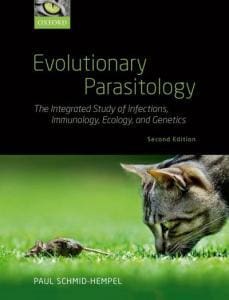
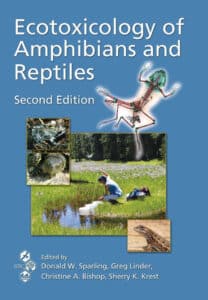
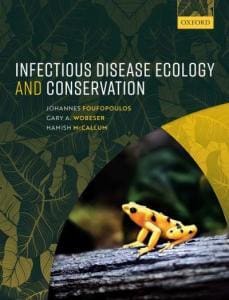
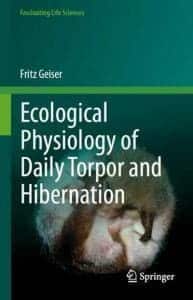
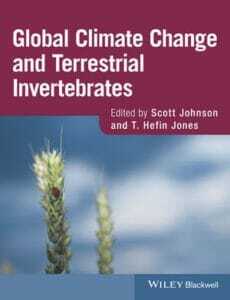
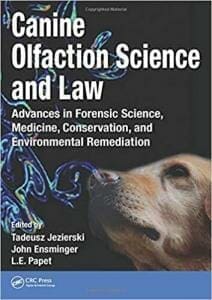

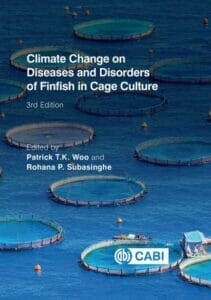





![Ettinger’s Textbook of Veterinary Internal Medicine 9th Edition [PDF+Videos] Ettinger’s Textbook of Veterinary Internal Medicine 9th Edition [True PDF+Videos]](https://www.vet-ebooks.com/wp-content/uploads/2024/10/ettingers-textbook-of-veterinary-internal-medicine-9th-edition-100x70.jpg)

![Textbook of Veterinary Diagnostic Radiology 8th Edition [PDF+Videos+Quizzes] Thrall’s Textbook of Veterinary Diagnostic Radiology, 8th edition PDF](https://www.vet-ebooks.com/wp-content/uploads/2019/09/textbook-of-veterinary-diagnostic-radiology-8th-edition-100x70.jpg)






